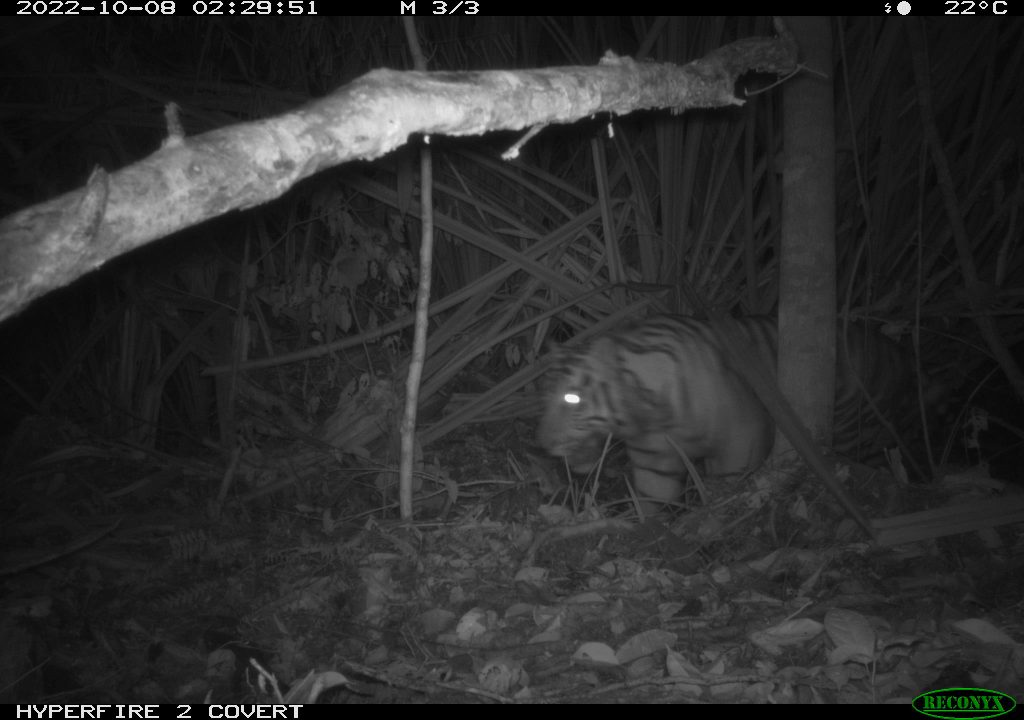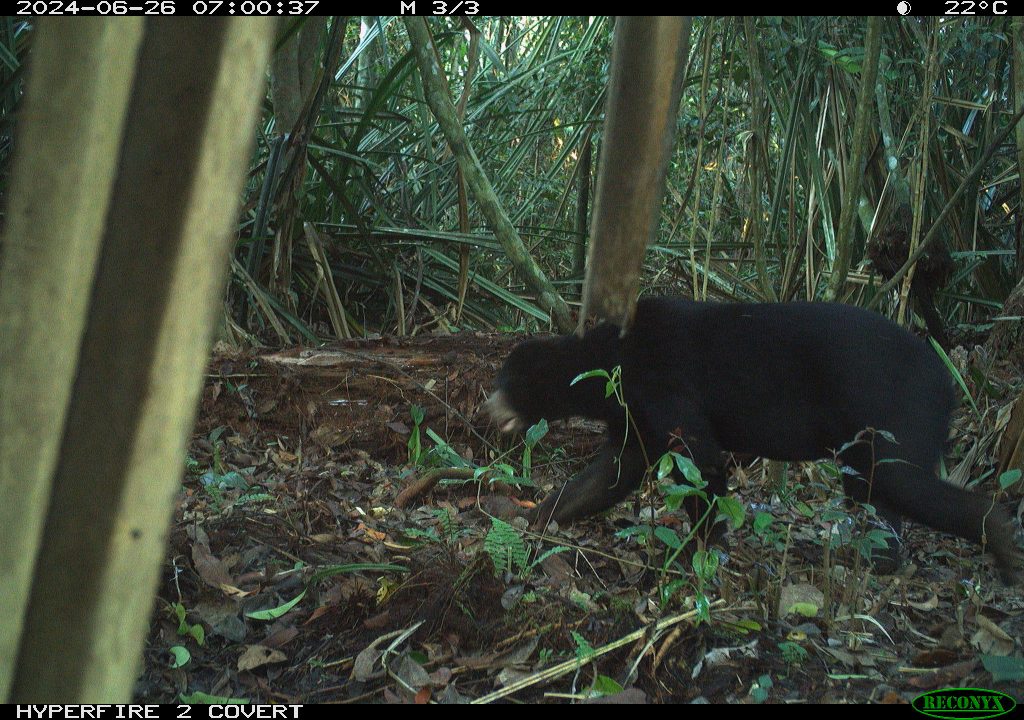July 07, 2025
Located along the eastern coastline of Sumatra, the Restorasi Ekosistem Riau (RER) landscape spans over 150,000 hectares of ecologically vital peat swamp forest. In addition to being vital carbon sinks, these forests provide shelter for rare and endangered animals, including some of the world’s most threatened species.
For conservation teams working on the ground, it is essential that these species are protected now and for the future. As Dian Andi Syahputra, RER’s Biodiversity Assistant, explains, “we protect forests not only for carbon and climate, but because they are home to species that cannot be found anywhere else in the world”.
In this article, we reveal five of the threatened animals living in the forests of RER, and hear from people working in the field to ensure these incredible creatures continue to survive – and thrive – in the wild.
Critically endangered and solitary by nature, the Sumatran tiger is the last surviving tiger subspecies in Indonesia. With fewer than 400 individuals remaining in the wild, each sighting in RER is a symbol of hope.

“Tigers are top predators and vital for ecosystem health,” explains Yoan Dinata, Biodiversity Conservation Manager at RER. “Their presence signals that our restoration efforts are working.”
The Sunda pangolin is one of the world’s most heavily trafficked animals, due in part to its highly prized scales, which are used in traditional medicine. They have also long been hunted as a source of food. Highly elusive and nocturnal, pangolins feed primarily on ants and termites; behaviour which plays a key role in pest control.
Although pangolins are incredibly shy and difficult to observe, RER camera traps and field teams have recorded several encounters, confirming their continued presence in the area.
This globally endangered duck prefers quiet, undisturbed peat swamp pools – habitats that are rapidly disappearing across Southeast Asia. Once widespread, the white-winged duck now numbers fewer than 1,000 individuals globally.
“RER offers one of the last strongholds for this species in Indonesia,” says Muhammad Iqbal, RER Ecologist. “Their survival depends on us maintaining these remote freshwater habitats.”
Known for its graceful swinging and melodic songs, the agile gibbon is a vital node in the tangled network of forest ecology. Gibbons act as seed dispersers, contributing to the natural regeneration of the forest.
Unfortunately, habitat loss and the illegal pet trade have severely impacted populations across Sumatra. At RER, where trees and canopies are left undisturbed, agile gibbons are often heard calling to one another at dawn and dusk; a reminder of what healthy forests should sound like.
The smallest of all bear species, the Malayan sun bear can be identified by a distinctive colour marking on its chest, along with a long tongue which is uses to forage for honey and insects. These solitary, arboreal creatures are listed as Vulnerable due to habitat loss and poaching.

A recent field study (Aug–Nov 2024) by Dr David Lee and Meisye Wulandari found that sun bears occupy a variety of habitats in the RER area, from primary forest interiors to logged and even plantation-adjacent areas. These findings underscore the importance of protection for this area, which is one of the last remaining strongholds for Malayan sun bears.
How RER Protects Biodiversity and Endangered Wildlife
RER’s approach to conservation is a holistic model for landscape-level conservation that’s setting a benchmark for others in the region to follow. This approach, known as ‘PARM’, covers Protection, Assessment, Restoration, and Management.
Here’s how each element is supporting the protection of the species listed above, along with many others in RER:
This is the first and most critical step. It focuses on preventing further degradation through forest patrols (often involving local community members); fire prevention and response systems; monitoring of illegal encroachment, poaching, and logging; maintaining buffer zones and enforcing access controls. Protection stabilises the area and creates the conditions needed for species to flourish, and for the wider ecosystem to recover.
Once an area is secure, RER conducts extensive scientific assessments to catalogue biodiversity (flora, fauna, habitats, etc.), understand hydrology and peat condition, map out potential threats (eg, fire risk, invasive species, human activity), and identify priority areas for restoration or further study. These surveys form the knowledge base for evidence-based action and adaptive management strategies.
Utilising the results of regular assessments, RER is working to reforest degraded areas with native tree species, re-wet drained peatlands, and reestablish natural water flow. In practice, this involves a combination of natural regeneration support (removing barriers to regrowth), replanting in severely degraded areas, blocking canals and restoring natural water flow, and habitat enrichment to attract and sustain wildlife. Restoration approaches are tailored to each site’s condition and ecological function.
To ensure restored landscapes remain healthy and resilient, ongoing, long-term management is essential. This includes continuous monitoring of wildlife and ecosystem health, community engagement and education, adaptive land use planning, integration of conservation with sustainable livelihoods, partnerships with scientific institutions and the private sector. Effective, continuous management ties all other components of the PARM approach together in a long-term, sustainable loop.
Each of these steps are made possible through dedicated local support. RER partners with surrounding communities to promote sustainable livelihoods, improve awareness of conservation, and involve local people in biodiversity monitoring efforts. “We’re not just protecting animals,” says Dian Andi Syahputra. “We’re building a future where people and wildlife can thrive together.”
Restoring Nature, Securing the Future
The PARM approach is not a linear process; it’s cyclical and iterative, with scope for alteration according to unique environmental requirements and the challenges at ground level. As conditions evolve, certain areas may re-enter the cycle for further assessment, targeted restoration, or intensified protection.
Conservation success doesn’t happen in isolation. It takes sustained effort, local commitment, and international attention to protect the species that keep our ecosystems alive and thriving. Through initiatives like RER and its innovative PARM approach, Indonesia is showing that it’s possible to reverse biodiversity loss; one forest, and one species, at a time.